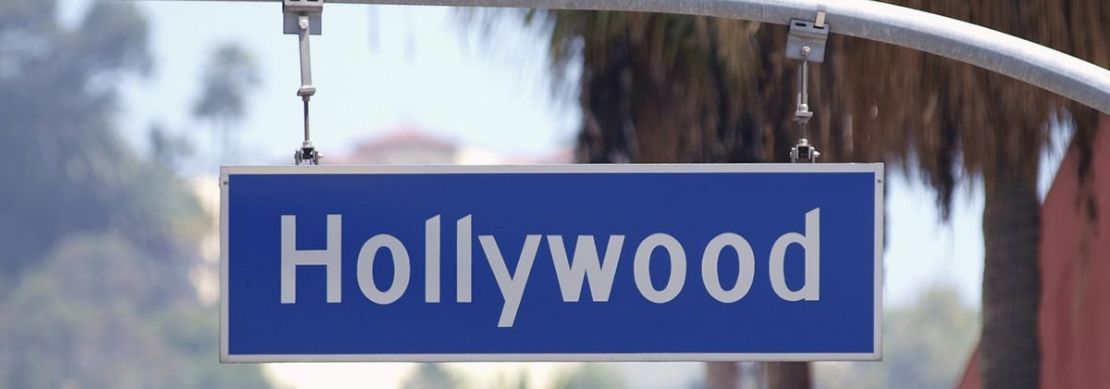See below exactly how much income you would need to earn in order to afford the principal, interest, taxes and insurance payments on a median-priced home in the 50 most populous metropolitan areas.
Key takeaways:
In the fourth quarter of 2024, somewhat higher mortgage rates offset at least some typical seasonal home price reduction, but relative home affordability managed to improve in about half of the nation's largest housing markets compared to the third quarter of 2024,
Although the quarterly average increased only slightly, mortgage rates marched nearly steadily higher during the period, starting as low as 6.12% and peaking at 6.85% in the last week of the quarter. As such, affordability likely worsened with each passing month as mortgage rates climbed.
The benefits of lower mortgage rates in the end of the third quarter and the start of the fourth did attract somewhat more home buyers, as did some improvement in the availability of homes available to purchase. Pending final revision, the National Association of Realtors reported that existing home sales posted annualized monthly rates of sale of 3.96, 4.15 and 4.24 million respectively in the three months of 2024. The December figure was good enough to be the second fastest pace of the year.
As is normally the case, the median sales price of existing homes tends to peak in June; it certainly did so this year, posting a new all-time record of $426,900. After the annual peak for prices is reached, home prices usually start their seasonal decline, which historically begin in the third quarter and carry through the fourth. At least on a monthly comparison basis, the home price retreat from June's peak to December was 5.4%, a fairly shallow number, and December saw no price reduction at all when compared to November. Comparing the second quarter median price against the fourth quarter, the differential was a modest 2.9%. Less seasonal decline in prices will likely set the stage for new record home prices again come spring, and December 2024's median sales prices was a full 6% higher than the same month in 2023.
During the fourth quarter, the Federal Reserve cut short-term interest rates by an additional 50 basis points, trimming a full percentage point off of the federal funds rate's recent peak. While short-term policy rates were reduced, long-term interest rates and bond yields rose appreciably, as investors fretted over everything from stubborn inflation at above-target levels to massive budget deficits, new debt issuance to finance them and the outcome from the elections. These concerns remain fully in play today.
With their leveraging effect, lower mortgage rates are more important in the affordability calculation than are lower home prices. In the current "national" calculation, buying a $410,100 median home price with a 20% down payment ($328,080 loan amount) using a 30-year mortgage with a rate of 6.63% requires an annual income of $108,366.74 to qualify once typical tax and insurance costs are included. Even if we adjust the Census Bureau's most recent 5-year running estimate of family income of $96,401 (per the American Community Survey, 2023) by 4% for 2024, this only lifts the income figure to a little over $100,000, still well short of the amount needed to qualify to buy that median-priced home (at least nationally, as if such a home existed).
On a weekly basis, at the beginning of October, 30-year fixed mortgage rates were about 51 basis points lower than the quarterly average values we used in our calculations. However, even if rates were at the 6.12% for the entirety of the third quarter, this would only lower the annual income needed to purchase that median-priced national home to $103,676.93 -- helpful, but still short of the income goal by several thousand dollars.
Outside of a major change in the economy, to current buyer demographics or a huge shift in the supply of available homes for sale, it's simply not likely that home prices will outright decline in the aggregate or by very much, even if prices in some housing markets seem to be settling somewhat. At best, buyers can hope that price increases flatten out over time while their incomes rise and mortgage rates decline all at the same time, so that more balanced buying conditions emerge. When these components might come together in beneficial fashion is anyone's guess at this point, but it doesn't seem likely we'll be seeing them very soon. Only time will tell.
That said, it's worth considering if the second quarter of 2024 might have been the nadir for home affordability. While they remain elevated, mortgage rates likely have some space to fall over time, especially if inflation can manage to continue to move towards the Fed's target. As well, we have already seen some improvement in the availability of homes for sale; in fact, the 4.3 months of supply at the present rate of sale last September was the highest such figure in more than 5 years (excepting one pandemic shutdown month). Provided there is no recession, incomes should also continue to increase, and lower rates and higher incomes should help close the affordability gap over time, although the improvement may be more of a rounded peak on a graph rather than a spike.
Home Price Trends
Home prices typically fade in the fourth quarter of each year, presenting opportunistic homebuyers with a chance to save a bit of money compared to those shopping during the busier spring and summer months. Forty of the top 50 metro housing markets saw home price deceleration in the last quarter of 2024; 23 of these metros have experienced back-to-back quarterly declines. While price softening in 80% of the nation's top housing market might seem like a lot, the same period a year ago saw 92% of metros with lower prices, and it was 100% in the fourth quarter of 2022. As such, the softening in home prices has been less broad than typical.
Looking at the 3Q-4Q price transition in the end of 2024, just 10 of the top 50 metros saw higher home prices. The only consequential increase was seen in the Richmond, VA metro, which posted a 4.32% quarterly pop; none of the remaining nine with gains exceeded even 1.5%. But even a small downward tilt for a majority of markets during the quarter can't mask the fact that home prices are still mostly on a strong upswing.
On an annual comparison basis, the home price news was not nearly as favorable, at least from a homebuyer's perspective. Compared to last year at this time, there were just five metros with lower home costs, and only the Raleigh, NC market saw managed a price reduction of more than a percentage point (actually just 1.08%). Of the 90 markets with home price gains, three are still sporting double-digit increases (Detroit, St, Louis, Cleveland) but there are plenty of 6-7-8-9 percent increases to be seen, too.
With less seasonal decline and still-strong year-over-year increases, home prices are starting 2025 at a high level. Seasonally, from the fourth quarter of 2023 to the second quarter of 2024, existing home prices rose 7.62% to their record quarterly high ($422,100). Looking forward from this year from 4Q24's current $410,100, it will require an increase of just 2.93% to re-attain that quarterly record -- and an increase of last year's magnitude would easily set a new record high of over $441,000. We may not see existing home prices get that high, but odds do favor a new record for them in spring 2025.
Salary Situation
If you're a glass-half-full kind of person, you'll be encouraged that the income needed to purchase a median priced home in the fourth quarter was lower in just about half of the nation's top 50 housing markets compared to the third quarter. As well, fully half of the biggest metro housing markets saw lower required salaries than at the same time last year despite higher home prices.
How could that be? Mortgage rates in the fourth quarter of 2024 were only slightly higher than in the third quarter (0.12%), but they were still materially lower this year (6.63%) than the fourth quarter of 2023 (7.30%). As such, it was the modest seasonal improvement in home prices that provided the quarterly improvement in affordability this year, but the more significant decline in mortgage rates that created the year-over-year improvement. Of course, these improvements are all relative, and there can be no doubt that costs remain high, improvement or not.
Although the quarterly decreases in income needed to buy a home were mostly small, there were a a few markets where there was material improvement, including a $4,732.60 reduction in the Providence, RI area and $4,326.48 in the Milwaukee, WI metro. On the more meager end, an income of $71.62 less was needed to purchase a median-priced home in the fourth quarter compared to the third in the Birmingham, AL region and $74.60 less in the Atlanta, GA metro area, just the barest of improvement.
Some of the annual declines were only measured in a fraction of a percent, such as the 0.04% less income needed this year in the Oklahoma City, OK metro area or the 0.26% less in the San Francisco market. Some places did see greater improvement in affordability; for example, the income needed in the Denver metro area was 5.5% less this year than last, and 6.2% less income was needed this year to purchase a median-priced home in the Raleigh, NC market, too.
What does it mean in terms of dollars? Looking at the two metro examples noted above, last year in the fourth quarter, a prospective home buyer in the Denver metro area would have needed $168,950.02 in income to cover the Principal, Interest, Taxes and Insurance (PITI) payments on a $652,300 median-priced home (mortgage amount of $521,840 after a 20% down payment). This year? The median-priced $650,900 home would need $159,665.69 in income to cover PITI after a 20% down payment. So the good news is that relative affordability has improved; that bad news is that even if we adjust the 2023 median family income (latest available) for the area by 4% for 2024 (as we did for the national figure above), this still only lifts the projected median income to $132,030.08 -- still well short of the amount needed to buy a median-priced home in this area.
With the same treatment applied to the Raleigh, NC market, where just a 6.2% decline in income was needed this year, last year's $461,200 home purchase price ($368,960 loan amount) needed $121,692.12 to cover PITI; this year, the $456,200 median priced home ($364,960 loan) needs $114,146.54 -- so a reasonable improvement in affordability. As was the case in Denver, adjusting the local median income from 2023 to 2024 levels put it at $124,222.80 -- about $10,000 more than the amount needed to buy that median-priced home, so this metro area is in reasonable affordability balance, all things considered.
To get more markets into better affordability balance, we'll need to see a combination of things. Only steady income gains, lower mortgage rates and softer (or even level) home prices will create better balance in home affordability, and absent some kind of economic malaise, this will take time.
Inventory Issues
After years of ultra-lean inventories of homes available to buy, supply conditions are finally improving. Slack sales and a somewhat greater willingness of homeowners to put their homes up for sale is starting to change the picture somewhat.
Inventory levels of homes available to buy are measured against the present rate at which they are selling, called an inventory-to-sales ratio. While useful, this measure can be misleading, since a fall off in demand -- such as might happen when mortgage rates suddenly or continually rise -- can bloat the figure upward even if no additional homes for sale come to market. That said, the National Association of Realtors reported that in December, inventories of homes to buy continued to lean out in typical seasonal fashion; coupled with an improvement in sales at the tail end of 2024, just 3.3 months of supply were on the market as the calendar turned 2025. While thin, it is nonetheless higher than the same period one year ago, and the pace of sales is stronger now than then, so the availability of homes is improved, and likely to improve somewhat more again as spring approaches.
It is said that the "lock-in effect" -- homeowners unwilling to sell and trade a low-rate mortgage for a higher one -- is a key factor in why there are so few existing homes for sale. While that is likely true, it's also true that home prices are also significantly higher now then they were over the last couple of years, and there's a reasonable likelihood that many wanna-be sellers would have difficulty qualifying for today's more expensive homes even if mortgage rates were measurably lower. Even a being able to make a large downpayment on a next home might not be enough to even keep the amount being financed the same, let alone lower, so there is no offset to (or relief from) the higher mortgage rates in the market today compared to a few years ago.
Even if they can meet the challenge presented by higher rates and higher home costs, sellers may face the same little-desirable-to-buy situation that buyers without homes face, and so must wait until conditions become better balanced for their needs. It's not quite a chicken-or-the-egg situation, but a combination of smaller step-up in mortgage payment (either lower rates or prices, or a combination of both) or more suitable or viable homes to buy at present prices is going to be needed over time to restore a more properly functioning existing housing market.
At least one saving grace for some sellers is that they may be able to explore avenues that have fewer barriers and better actual availability of homes for sale. For example, a seller looking to buy new construction doesn't face the limited inventory issue that continues to bedevil potential buyers of existing homes, and for that, many builders are offering price concessions and even financing assistance. Folks relocating away from crowded coastal real estate markets may also find better availability and value opportunities, too.
Inventories of homes for sale typically are at their leanest in the fourth quarter of each year, as holidays kick in and sellers whose homes haven't sold pull them from the market temporarily. As such, the I/S ratio often shrinks to end the year, but starts to rebound in late winter as any pulled listings return to the market in late winter.
How much house will your income and debt-load support? You can run your own calculations with HSH.com's How Much House Can I Afford to Buy? calculator.
Downpayment Difficulties
Potential homebuyers chasing today's markets know the problem all too well. Rising home prices mean greater amounts of savings are needed to achieve even a small downpayment. Our calculations use a 20% down payment as a base, since this eliminates the complication of factoring for the costs of Private Mortgage Insurance, where premiums are dictated by the borrower's credit strength, size of the borrower's downpayment and choice of mortgage type and term.
Want to buy the first quarter's national median-pried home with a 20% down payment? You'll need to have amassed $82,020 in savings -- and this leaves out the need to accumulate funds for mortgage closing costs and any required reserves. Even for a highly diligent saver this amount will likely take years to amass, and by then, higher home prices will likely necessitate an even larger amount.
Although the national median home price was lower this quarter than last, it's still some 4.8% higher than the same period a year ago. As such, while the downpayment size to reach 20% of the median price is down just a bit (-$1,880) compared the third quarter, it is still $3,760 more this year than last. Even a diligent saver would have had to come up with an additional $72.30 per week on top of other savings just to keep pace.
At the risk of being discouraging, if someone could save $1,000 per month, it would take them nearly seven full years just to reach today's 20% downpayment level; saving at twice that rate would make it about three and a half years... but in either case, the downpayment goal line will surely have moved, again as home prices tend to rise with inflation over time.
Even someone looking to get in with a minimal 3% downpayment -- available on Fannie Mae's HomeReady and Freddie Mac's Home Possible programs (and 3.5% down for FHA-backed loans) would need $12,303 and $14,354 respectively. This would shorten the savings timeframe, but a smaller downpayment on that same median-priced home means both a larger loan amount and incurring mortgage insurance costs -- so a higher income is actually required to qualify.
If you're thinking of going with one of these low-downpayment options, you'll want to see how these choices will work over time by using HSH's Low Downpayment Mortgage Comparison Calculator. You'll be able to see the costs of non-cancelable FHA mortgage insurance against the cancelable PMI costs of Fannie and Freddie offerings over any time horizon you desire. We take into account risk-based loan-level pricing adjustments, too.
Potential homebuyers of more modest means looking to buy homes often struggle to come up with even a minimum downpayment and closing costs, especially in heated markets. Help making the jump to homeownership is often available but can be tricky to find if you don't know where to look. To help would-be homebuyers, HSH offers its database of Homebuyer Assistance Programs by state, where information about these valuable programs, vital website addresses, contact info and more can be found.























































